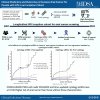Clinical Predictors and Outcomes of Invasive Anal Cancer for People With HIV in an Inception Cohort
- PMID: 38573010
- PMCID: PMC11426273
- DOI: 10.1093/cid/ciae124
Clinical Predictors and Outcomes of Invasive Anal Cancer for People With HIV in an Inception Cohort
Abstract
Background: Due to the heterogeneity of risk for invasive anal cancer (IAC) among people with human immunodeficiency virus (PWH), we investigated predictors of IAC and described outcomes among those with a cancer diagnosis.
Methods: Using a longitudinal inception cohort of anal cancer screening, we evaluated risk factors and outcome probabilities for incident IAC in Cox models. Screening included anal cytology and digital anorectal examination, and, if results of either were abnormal, high-resolution anoscopy.
Results: Between 30 November 2006 and 3 March 2021, a total of 8139 PWH received care at the University of California, San Diego, with 4105 individuals undergoing screening and subsequently followed up over a median of 5.5 years. Anal cancer developed in 33 of them. IAC was more likely to develop in patients with anal high-grade squamous intraepithelial lesions (aHSILs) on initial or subsequent follow-up cytology (hazard ratio, 4.54) and a nadir CD4 cell count ≤200/µL (2.99). The joint effect of aHSILs and nadir CD4 cell count ≤200/µL amplified the hazard of IAC by 9-fold compared with the absence of both. PWH with time-updated cytology aHSIL and CD4 cell counts ≤200/µL had 5- and 10-year probabilities of IAC of 3.40% and 4.27%, respectively. Twelve individuals with cancer died, 7 (21% of the total 33) due to cancer progression, and they had clinical stage IIIA or higher cancer at initial diagnosis.
Conclusions: PWH with both aHSIL and a nadir CD4 cell count ≤200/µL have the highest risk of IAC. PWH who died due to IAC progression had clinical stage IIIA cancer or higher at diagnosis, highlighting the importance of early diagnosis through high-resolution anoscopic screening.
Keywords: HIV; anal cancer; effect modification; high-resolution anoscopy; predictors and outcomes.
© The Author(s) 2024. Published by Oxford University Press on behalf of Infectious Diseases Society of America. All rights reserved. For commercial re-use, please contact reprints@oup.com for reprints and translation rights for reprints. All other permissions can be obtained through our RightsLink service via the Permissions link on the article page on our site—for further information please contact journals.permissions@oup.com.
Conflict of interest statement
Potential conflicts of interest. E. R. C. has received unrestricted research grants paid to the University of California Reagents from Gilead Sciences for unrelated hepatitis C virus research projects and has received payment or honoraria from Gilead Science (symposium, educational event November 2021) and THERATechnologies (advisory board consulting fees for an unrelated topic in 2022). All other authors report no potential conflicts. All authors have submitted the ICMJE Form for Disclosure of Potential Conflicts of Interest. Conflicts that the editors consider relevant to the content of the manuscript have been disclosed.
Figures


Similar articles
-
Implementation of a Screening Program for High-Grade Anal Dysplasia in High-Risk Patients in a Tertiary Cancer Center.J Surg Oncol. 2025 Feb;131(2):151-159. doi: 10.1002/jso.27719. Epub 2024 Nov 13. J Surg Oncol. 2025. PMID: 39539035
-
Shared Decision-Making Concerning Anal Cancer Screening in Persons With Human Immunodeficiency Virus.Clin Infect Dis. 2023 Feb 18;76(4):582-591. doi: 10.1093/cid/ciac491. Clin Infect Dis. 2023. PMID: 35723270 Free PMC article.
-
Five-year cumulative incidence of invasive anal cancer among HIV-infected patients according to baseline anal cytology results: an inception cohort analysis.HIV Med. 2015 Mar;16(3):191-5. doi: 10.1111/hiv.12190. Epub 2014 Sep 6. HIV Med. 2015. PMID: 25197003 Free PMC article.
-
Prevalence of abnormal anal cytology and high-grade squamous intraepithelial lesions among a cohort of HIV-infected men who have sex with men.Dis Colon Rectum. 2014 Apr;57(4):475-81. doi: 10.1097/DCR.0000000000000095. Dis Colon Rectum. 2014. PMID: 24608304
-
Association of antiretroviral therapy with anal high-risk human papillomavirus, anal intraepithelial neoplasia, and anal cancer in people living with HIV: a systematic review and meta-analysis.Lancet HIV. 2020 Apr;7(4):e262-e278. doi: 10.1016/S2352-3018(19)30434-5. Epub 2020 Feb 25. Lancet HIV. 2020. PMID: 32109408
Cited by
-
German-Austrian guideline on screening for anal dysplasia and anal carcinoma in people living with HIV.J Dtsch Dermatol Ges. 2025 Aug;23(8):1025-1040. doi: 10.1111/ddg.15719. Epub 2025 May 5. J Dtsch Dermatol Ges. 2025. PMID: 40320909 Free PMC article.
-
High Prevalence of High-Risk HPV Among People with and Without HIV: Insights into Risk Factors for Tailored Screening Approaches.Microorganisms. 2024 Dec 13;12(12):2571. doi: 10.3390/microorganisms12122571. Microorganisms. 2024. PMID: 39770774 Free PMC article.
References
-
- Berry JM, Jay N, Cranston RD, et al. . Progression of anal high-grade squamous intraepithelial lesions to invasive anal cancer among HIV-infected men who have sex with men. Int J Cancer 2014; 134:1147–55. - PubMed
Publication types
MeSH terms
Grants and funding
LinkOut - more resources
Full Text Sources
Medical
Research Materials

